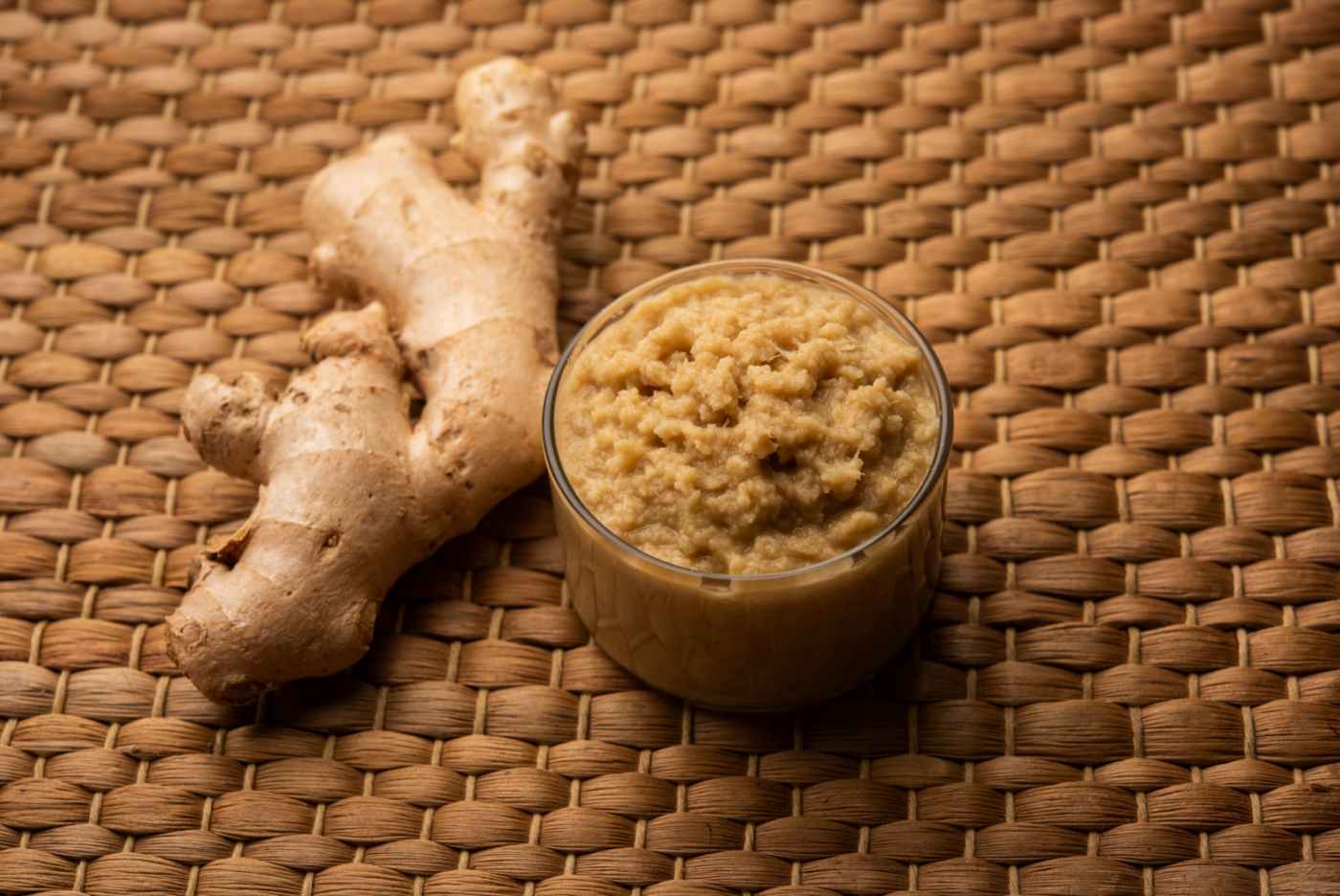Read More: Culinary History of Ginger Paste
Ancient Roots: Ginger’s Early Uses
The story of ginger paste begins with the history of ginger itself. Originating in Maritime Southeast Asia, ginger’s cultivation and use dates back over 5,000 years. Its early applications were likely both culinary and medicinal. Ancient cultures, including those in India and China, recognized ginger’s potent properties.
In India, ginger became deeply integrated into Ayurvedic medicine, a traditional system that utilizes herbs and spices for healing. It was used to treat digestive issues, inflammation, and respiratory ailments. The practice of grinding ginger, often with other spices like garlic and turmeric, into a paste for both medicinal and culinary purposes likely emerged early on. This paste, a precursor to the modern ginger paste, formed the flavor foundation for countless dishes in the diverse regional cuisines of India.
Similarly, in China, ginger was revered as both a food and a medicine. Traditional Chinese Medicine (TCM) incorporated ginger for its warming properties and its ability to aid digestion and circulation. While fresh ginger was widely used, the process of pounding or grinding it into a paste would have been a natural way to extract its potent juices and create a more concentrated form for both therapeutic and culinary applications.
The Spice Trade and the Spread of Ginger’s Influence
The spice trade played a crucial role in disseminating ginger and its various preparations across the globe. From the first millennium AD, Arab traders transported ginger from India and Southeast Asia to the Middle East and eventually to Europe. The ancient Greeks and Romans embraced ginger, valuing it for its medicinal qualities and its ability to add a unique flavor to their dishes.
While historical records don’t explicitly detail the use of ginger paste in these early periods, it’s plausible that some form of pounded or ground ginger was employed. The laborious process of preparing fresh ginger would have made a ready-to-use paste a desirable option, particularly for medicinal purposes or for use in sauces and stews.
Ginger in Medieval Europe: A Costly Commodity
During the Middle Ages, ginger became a highly prized spice in Europe, often commanding exorbitant prices. Its exotic flavor and perceived medicinal benefits made it a status symbol, accessible primarily to the wealthy. While whole ginger root was the most common form, the practice of grinding spices into pastes for culinary use was well-established. It’s reasonable to assume that ginger, like other expensive spices, was sometimes prepared as a paste to maximize its use and extend its shelf life.
The Rise of Convenience: From Mortar and Pestle to Mass Production
For centuries, the creation of ginger paste remained a largely manual process, relying on tools like the mortar and pestle. This was time-consuming and labor-intensive. However, the Industrial Revolution ushered in a new era of food processing and preservation.
The 19th and 20th centuries witnessed the development of technologies that enabled the mass production of a wide range of food products, including condiments and spice pastes. The demand for convenience in the kitchen grew, particularly in urban centers. These factors paved the way for commercially produced ginger paste.
Ginger Paste in the Modern Era
Today, ginger paste is a widely available ingredient found in supermarkets and specialty stores across the globe. Its popularity is fueled by several factors:
- Convenience: It eliminates the need for peeling and grating fresh ginger, making it a quick and easy way to add ginger’s flavor to dishes.
- Consistency: Commercial ginger paste offers a uniform flavor and texture, ensuring consistent results in recipes.
- Shelf Life: Properly stored, ginger paste has a long shelf life, reducing food waste compared to fresh ginger.
- Versatility: It can be used in a vast array of dishes, reflecting the global influence of cuisines that traditionally utilize ginger.
The Future of Ginger Paste
The story of ginger paste is a dynamic one. The market is seeing a rise in artisanal and organic ginger pastes, catering to consumers seeking higher quality and more nuanced flavors. Innovations in processing and packaging are also likely to emerge, further improving the shelf life and convenience of this beloved ingredient. The future may also see a blend of traditional and modern techniques, with a renewed appreciation for the flavor profiles achievable through small-batch, handcrafted ginger pastes.
In Conclusion
The culinary history of ginger paste is a compelling narrative that spans continents and millennia. From its roots in ancient medicinal practices to its current status as a global pantry staple, ginger paste reflects our enduring fascination with the flavor and properties of ginger. Its journey mirrors the broader trends in food history, showcasing the interplay of culture, trade, technology, and the constant human desire for both delicious and convenient food. As we continue to explore the vast world of flavors, ginger paste will undoubtedly remain a vital ingredient, connecting us to a rich culinary heritage while adapting to the ever-evolving needs of the modern kitchen.


Share
Click on the icons below to share "Title of the item to share"